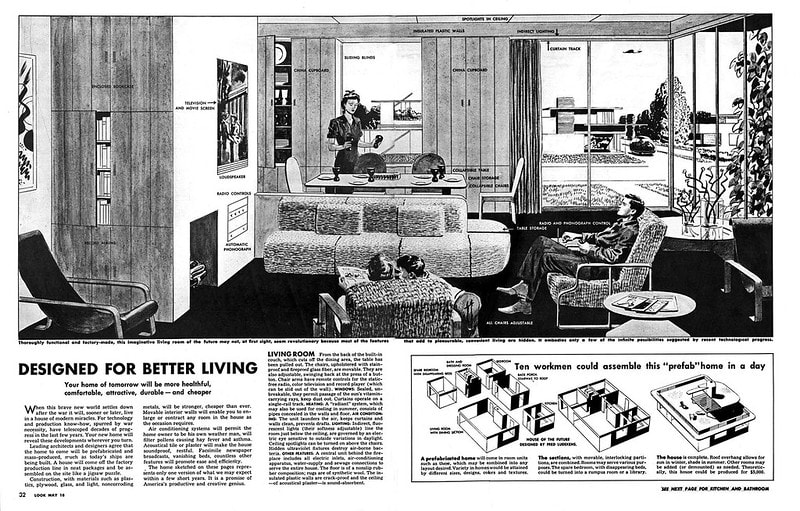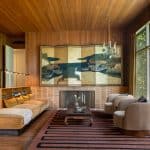Image via Flickr by James Vaughan
World War II was cause for massive changes throughout society — down to the minutia of interior design and home aesthetics. 1945 saw a new generation of veterans with young families working tirelessly to rebuild their lives. The pressing need for inexpensive housing and furnishings spurred a boom in design and production. A new optimism prevailed, and the introduction of commercial jet travel in 1957 encouraged a growing fusion of cultural influences. The world saw a blurring of Eastern and Western aesthetics and technology that resulted in an entirely new cultural fusion.
Let’s time travel to a post-WWII world — specifically in America, Italy, Scandinavia, and Japan — where innovative design and aesthetics are blooming. The most significant changes to interior design were towards:
- Functionality
- Mass production
- Balance of natural materials and new, advanced-synthetic materials
Browse the innovative changes of post-war design, and the global designers who influenced everything we love about mid-century modern interiors!
Forward Towards Functionality
Informality and adaptability replaced the elaborate households of prewar years. With it, the need for expensive and permanent furniture as a symbol of status dissipated and a time of innovation rose — new materials and technologies, many developed during wartime, freed design from tradition. Increasingly abstract and sculptural aesthetics combined with a lower price for mass-produced objects defined a post-war era of design. This modernist movement emphasized functionality above all — minimalism respectful of post-war rationing and new beginnings.
Global Design Innovation
The most marked changes occurred in America, Italy, Scandinavia, and Japan. In the USA, we saw an influx of high-quality, inexpensive furniture made from innovative materials like fiberglass and plastics. This new age in furniture was uniquely designed for a broad consumer market, a revolution in the way products were created and sold. Italian designers established themselves as “leaders in the lucrative domestic design industry,” hoping to revive their depressed postwar economy, embracing new materials and technologies. Italian designers of the time produced “radically innovative designs that expressed the optimistic spirit of high-style modernism.”
Scandinavian designers combined the traditional beauty of natural materials with advanced technology, giving their designs a warm and domestic, yet modern quality. Japanese designers, aware of contemporaneous developments in Western architecture and design, strove to create a balance between traditional Asian and international modern aesthetics while still evoking national values with their distinctly Asian sensibility.
Three (of Many) Notable Global Post-War Designers
Italy’s Ico Parisi
The Sicilian-born architect and designer Ico Parisi was one of the “most influential figures designing the look of the 1950s” and “embodies the funky modernist style of the early midcentury age.” — InCollect
Ico Parisi, long sideboard, 1955. Photo sourced from VNTG
Denmark’s Arne Jacobson
Arne Jacobsen was a Danish architect and designer known for his contribution to architectural Functionalism, a movement that includes the Nordic “funkis” that is featured significantly in Scandinavian urban architecture. Throughout his career, Jacobson garnered success in his simple, practical, and sleek furniture designs.

Arne Jacobsen, swan chair, 1958. Photo sourced from Hive Modern Purchase this chair here!
Japan’s Isamu Kenmochi
Kenmochi’s rise to fame and influence in post-war modern design in Japan was heavily related to his bamboo basket chair design, described as a “departure point” in midcentury modern design
Isamu Kenmochi, woven wicker bird’s nest chair, ca 1960s. Photo sourced from 1stDibs
Had it not been for these historic social movements and world-altering events, we wouldn’t have the need for innovation that birthed a new era of design. For regular updates on my blogs, newsletters, and modern home listings across Portland, follow my Instagram @modernhomesportland.








